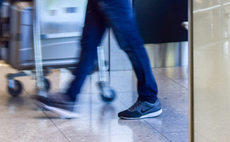Oil prices present airlines with their biggest challenge since 9/11, but IT strategies could help keep companies going
IT could protect airlines from the impact of the oil price surge Effective IT use could mean survival for airlines as the oil price surge sends shockwaves through the industry, presenting "a grea...
To continue reading this article...
Join Computing
- Unlimited access to real-time news, analysis and opinion from the technology industry
- Receive important and breaking news in our daily newsletter
- Be the first to hear about our events and awards programmes
- Join live member only interviews with IT leaders at the ‘IT Lounge’; your chance to ask your burning tech questions and have them answered
- Access to the Computing Delta hub providing market intelligence and research
- Receive our members-only newsletter with exclusive opinion pieces from senior IT Leaders


















